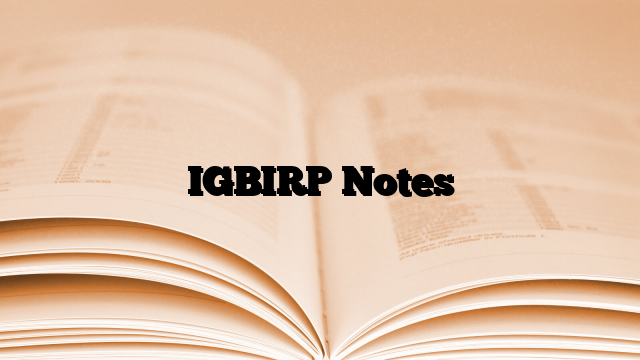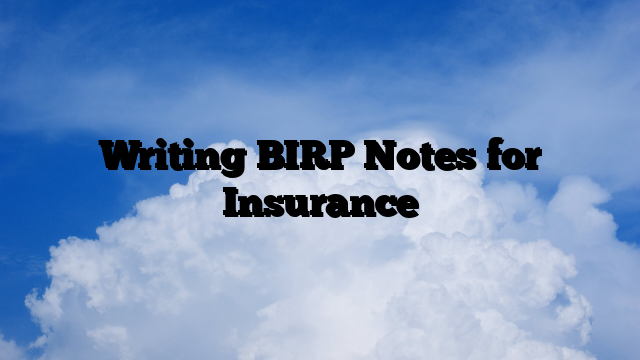In mental health care, documentation is not just a task, it’s an important part of the treatment. SIRP notes are one method therapists use to record client sessions in a structured, focused way. They help keep records organized, reduce time spent on paperwork, and support continuity of care. Whether working in a busy clinic or private practice, therapists often need a system that is clear, easy to use, and clinically effective. That’s where SIRP notes come in. They make it easier to track client progress, guide treatment decisions, and meet ethical and legal requirements. Plus, using a consistent note format can improve communication between professionals and help when reviewing cases over time. If you’ve ever found yourself staring at a blank page after a session, unsure of where to start, this note format might just be your new best friend (besides coffee, of course).
What Are SIRP Notes?
SIRP notes are made up of four important parts: Situation, Intervention, Response, and Plan. Each section has its own purpose and helps therapists organize their session notes in a way that is clear, helpful, and focused on client progress. Whether you’re new to this format or just need a refresher, understanding each part can make your documentation smoother and more effective. Below, we’ll break down each section in detail, so you always know what to write and why it matters.
Situation – The Starting Point of the Session
The “Situation” section is where you describe the client’s present condition at the time of the session. It sets the scene for the rest of the note and gives context for your interventions and treatment planning. Think of it as a snapshot of how the client “showed up”, both emotionally and behaviorally.
What to Include in “Situation”:
Client’s Appearance and Behavior
- Was the client calm, agitated, tearful, withdrawn?
- Were there any visible signs of distress, like restlessness, poor grooming, or tearfulness?
Example:
Client presented with a flat affect, minimal eye contact, and spoke in a soft, low tone. Appeared disheveled, wearing wrinkled clothes.
Mood and Affect
- What emotions did the client report feeling?
- What did their nonverbal cues suggest?
Example:
Client reported feeling “numb and overwhelmed.” Affect appeared congruent with stated mood.
Presenting Problem or Issue
- Why is the client seeking help today?
- Has something new happened since the last session?
Example:
Client stated they experienced a panic attack earlier in the week after a conflict with their supervisor.
Self-Report and Clinical Observations
- Include the client’s perspective in their own words when possible.
- Also note any discrepancies between their words and your clinical observations.
Example:
Client denied suicidal ideation but frequently mentioned feeling “like a burden.”
Relevant Life Updates
- Any major changes in relationships, work, health, finances, etc.?
- Recent triggers, relapses, or improvements?
Example:
Client shared that their mother was hospitalized last night, which added to existing caregiver stress.
Quick Tip:
Even if the client says “nothing new,” observe and document how they say it. Sometimes “nothing” comes with crossed arms, slouched posture, and avoidance—all of which matter in the “Situation” section.
Intervention – What You Did as the Therapist
The “Intervention” section is where you write what you did during the session to help the client. This includes the specific techniques, strategies, or therapeutic approaches you used to address the issues presented in the Situation section.
In simple terms: This part answers, “What did I do to help the client today?”
What to Include in “Intervention”:
Therapeutic Approach or Framework
- Mention the method used (e.g., Cognitive Behavioral Therapy, Motivational Interviewing, EMDR, DBT).
- Briefly describe how you applied it.
Example:
Used CBT to challenge automatic negative thoughts related to client’s self-worth.
Specific Techniques or Exercises
- Describe the tools used: breathing techniques, grounding, thought records, role-playing, journaling prompts, etc.
Example:
Guided the client through a 4-7-8 breathing exercise to manage anxiety symptoms in-session.
Psychoeducation
- Any education provided about symptoms, coping skills, or diagnoses.
- Did you explain how anxiety works in the body, or what healthy boundaries look like?
Example:
Provided psychoeducation about trauma responses and how they relate to current avoidance behaviors.
Client Involvement
- Did the client participate actively?
- Was there resistance, openness, or difficulty with the intervention?
Example:
Client engaged well in identifying thought distortions and provided examples from the past week.
Adjustments Made During the Session
- If the client was overwhelmed, did you simplify an exercise?
- Did you change course based on the client’s emotional state?
Example:
Shifted from trauma processing to grounding exercises due to client’s heightened distress.
Keep It Clear and Focused
- Don’t just say “talked about anxiety.” Be specific: What about it?
- Instead of saying “counseled the client,” clarify how: “Used motivational interviewing to explore readiness for behavior change.”
Response – How the Client Reacted
The “Response” section captures how the client responded to the interventions used during the session. This part reflects their emotional, behavioral, and cognitive reactions to the therapy work you just described. It’s essential for showing whether your approach was helpful, needs adjusting, or hit a wall entirely.
In short: “What did the client say, feel, or do after I applied the intervention?”
What to Include in “Response”:
Client’s Emotional or Verbal Feedback
- What did they say about the intervention?
- Did they seem relieved, confused, defensive, or engaged?
Example:
Client reported that the breathing exercise made them feel calmer and “more in control” than before.
Behavioral Reactions
- How did their body language, facial expressions, or tone of voice change?
- Did they become more open, distant, tearful, or energetic?
Example:
Client initially avoided eye contact but became more relaxed and talkative after practicing grounding techniques.
Level of Engagement
- Were they willing to participate?
- Did they resist or show motivation?
Example:
Client was hesitant to explore core beliefs but eventually shared one tied to past trauma.
Insight or Breakthrough Moments
- Did they have a realization or new understanding about their thoughts, behaviors, or emotions?
Example:
Client had an “aha moment” realizing that their self-criticism stems from parental expectations.
Any Negative or Neutral Responses
- Sometimes things don’t go as planned, and that’s okay.
- If the client didn’t respond well or didn’t understand the intervention, that’s valuable to document too.
Example:
Client stated they felt “frustrated” with the journaling prompt and found it hard to stay focused.
Tips for Strong “Response” Notes:
- Focus on client reactions, not your interpretation.
- Use direct quotes when helpful.
- Be objective but descriptive.
- Show patterns over time (e.g., “Client was more engaged this week than last.”)
Plan – What Happens Next?
The “Plan” section is where you outline the next steps for the client’s treatment. It’s the bridge between today’s session and the work ahead. This part ensures continuity of care, guides future sessions, and keeps both therapist and client aligned on goals.
In simple terms: “Based on today’s session, here’s what we’re doing next.”
What to Include in the “Plan” Section:
Therapeutic Goals
- Identify specific short-term or long-term goals.
- These should connect to what was discussed today or what continues to be a focus.
Example:
Continue working on increasing client’s coping skills for managing panic symptoms.
Homework or Practice Assignments
- If you’ve given the client something to work on between sessions (e.g., journaling, a CBT worksheet, mindfulness practice), write it here.
Example:
Client will complete a thought record daily to challenge negative thinking patterns.
Future Interventions
- Note any techniques or strategies you plan to use in the next session(s).
- This shows you’re thinking ahead and tailoring care.
Example:
Introduce guided imagery and explore unhelpful core beliefs next session.
Referrals or Additional Support
- Did you recommend outside help (e.g., psychiatrist, support group, primary care)?
- If a medication consult or safety plan is needed, document it.
Example:
Referred client to psychiatrist for medication evaluation.
Session Follow-Up
- Note when the next session is scheduled and if there’s a specific focus.
- Also record client’s commitment (or lack of) to the plan.
Example:
Client agreed to return next week and seemed motivated to complete assigned task.
Why the Plan Matters
- It keeps therapy organized.
- It shows progress over time.
- It protects both client and therapist by documenting a clear path forward.
SIRP Notes Examples
Below are two sample SIRP notes to help you understand how this format works in real-life therapy sessions. These examples show how to document different client situations clearly and effectively, while staying organized and clinically focused. Whether you’re new to SIRP or just need a quick refresher, these will give you a practical view of what strong, professional notes look like.
Adult Client – Generalized Anxiety Disorder
Client Name: Maria Lopez
DOB: 03/14/1990
Date of Session: 04/18/2025
Therapist: Jordan Ellis, LCSW
Session Type: Individual (Telehealth)
Location: HIPAA-Compliant Video Call
Duration: 50 minutes
S – Situation
Maria appeared via video dressed appropriately but fidgeted frequently throughout the session. She reported experiencing daily anxiety related to her workload and upcoming deadlines. She rated her anxiety as 8/10. She described frequent headaches, trouble sleeping, and difficulty concentrating. No suicidal or self-harm ideation was reported. Client expressed concern that her anxiety was “starting to affect everything.” Appetite normal; sleep disrupted.
I – Intervention
Therapist provided psychoeducation on the relationship between chronic stress and physical symptoms. Guided client through diaphragmatic breathing (4-7-8 technique) and encouraged awareness of physical tension. CBT approach used to explore and challenge the thought “If I don’t get everything done perfectly, I’ll fail.” Therapist supported client in identifying evidence to reframe the belief. Homework assigned: daily 5-minute breathing practice and thought log for anxiety triggers.
R – Response
Client was receptive and engaged in breathing exercise. She stated, “This actually helps a little—I didn’t know breathing like this could calm me down.” Participated well in cognitive restructuring and offered realistic alternate thoughts. Showed insight into how perfectionism may be worsening her anxiety. Expressed willingness to apply techniques outside of session.
P – Plan
Maria will practice breathing exercises nightly and complete at least three entries in her thought log. Therapist will introduce coping skill menu next session. Follow-up session scheduled for 04/25/2025 at 2:00 PM.
Therapist Signature:
Jordan Ellis, LCSW
NPI: 134XXXXXXX
License #: CA-765432
Date: 04/18/2025
Teen Client – Depressive Symptoms and Low Motivation
Client Name: David Brooks
DOB: 11/07/2007
Date of Session: 04/18/2025
Therapist: Selina Ray, M.A., LPCC
Session Type: Individual (In-person)
Location: Sunrise Youth Counseling Center – Office 2B
Duration: 45 minutes
S – Situation
David presented with flat affect, slouched posture, and avoided eye contact. Reported low mood for the past two weeks, missed three school days, and described feeling “empty” and “tired all the time.” He stated, “I’m not really into anything anymore.” Appetite poor; sleeping more than usual (10–12 hours/day). No suicidal ideation expressed but noted feeling “pointless.” Wearing clean clothes, grooming appropriate.
I – Intervention
Therapist used supportive, client-centered approach and engaged David in discussing daily routines and energy levels. Introduced behavioral activation model and collaborated with client to set two small achievable goals: (1) brush teeth daily and (2) play basketball with a friend once before next session. Used motivational interviewing techniques to assess readiness for change and reinforced autonomy in setting goals. Psychoeducation on how small actions can improve mood shared.
R – Response
David was hesitant initially but opened up midway through session. He agreed that smaller goals felt “less annoying” than big ones. Nodded and smiled slightly when talking about playing basketball. Said he’s “willing to try” brushing teeth daily and described it as “a win” if he remembers 3 out of 7 days. Made more eye contact and body posture improved by end of session.
P – Plan
David will attempt 2 small tasks: brushing teeth daily and one physical activity with a peer. Therapist will follow up on goal completion and emotional response next week. If mood does not improve, therapist will consider PHQ-9 reassessment. Parent consultation scheduled for 04/20/2025.
Therapist Signature:
Selina Ray, M.A., LPCC
NPI: 119XXXXXXX
License #: TX-221198
Date: 04/18/2025
SIRP Note Template
To help you streamline your clinical documentation, here is a ready-to-use SIRP note template. This format ensures your notes stay organized, professional, and focused on client care. You can fill it out after each session to track progress, interventions, and next steps—saving time while meeting ethical and legal standards.
Client Information
- Client Name: _____________________________________
- Date of Birth: _____________________________________
- Date of Session: __________________________________
- Therapist Name: ___________________________________
- License Number: _________________________________
- Session Type: (Individual / Group / Family) ____________
- Location: _________________________________________
- Duration: __________ minutes
S – Situation
(Describe the client’s current emotional, mental, and behavioral status. Include appearance, mood, self-reported concerns, and recent stressors or events.)
I – Intervention
(Describe the therapeutic techniques, interventions, or strategies used. Include psychoeducation, exercises, tools, or frameworks used in session.)
R – Response
(Describe the client’s verbal and non-verbal response to interventions. Include level of participation, engagement, insight, and any emotional or behavioral shifts.)
P – Plan
(Outline goals, follow-up tasks, homework, future interventions, referrals, or session scheduling.)
Therapist Signature: ___________________________
Date: __________________
The Bottom Line:
Keeping your documentation clear, consistent, and clinically sound can feel overwhelming. That’s where SIRP notes step in. With their structured format, Situation, Intervention, Response, and Plan, they give therapists a simple yet powerful way to capture the heart of each session without getting lost in vague summaries or overly complex charts.
Using SIRP notes helps therapists stay focused on the client’s journey. They provide a reliable framework that not only improves clinical accuracy but also supports better treatment planning and collaboration with other professionals. Whether you’re tracking symptoms, monitoring progress, or preparing for case reviews, SIRP notes give your work structure and purpose.
They’re also practical. You don’t need fancy software or a Ph.D. in formatting, just a consistent process. And let’s face it, anything that helps reduce post-session documentation stress is a win.
So whether you’re new to SIRP notes or refining your approach, adopting this method can help you spend less time staring at a blank screen and more time making meaningful therapeutic connections. When done right, good notes aren’t just paperwork, they’re part of good care.
Still unsure? Give the template a try in your next session. You might just find your new favorite documentation style (next to checklists and coffee, of course).






